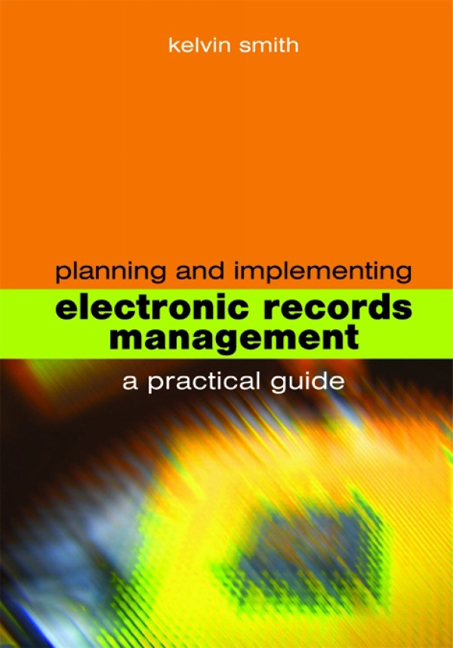6 - File plan
from Part 2 - Design
Published online by Cambridge University Press: 08 June 2018
Summary
This chapter describes the most crucial aspect of the design of the electronic records management system – the file plan. It examines the key elements that make up the process – functional design, naming conventions and the management of e-mail within the plan. At the end of the chapter is a sample list of requirements for file plans and an example of a file plan. It is worth quoting the oft-repeated extract from guidance issued by The National Archives:
The departmental business classification scheme (file plan) should be recognized as the principal intellectual instrument in records management activities and should be devised and implemented to support the management of the creation and disposal of records and, where possible, the management of security of and access to the records.
(Business Classification Scheme Design (The National Archives, 2003))
Introduction
Already we have run up against one confusing aspect of this part of electronic records management – that of terminology. The term ‘business classification scheme (BCS)’ has been used widely to mean the file plan. In reality, BCS is a product of business analysis. It is used in management techniques and processes that involve organizational and business change. Such schemes (and there have been several types) are extremely useful and closely related to file plan structure but they are not the same thing. The file plan is something more than a classification scheme. It is a structure that is a reflection of records management principles – in particular taking into consideration appraisal, disposal, access and the management of specific types of record (such as case files). The overall purpose of creating, using and managing records is to support the business of an organization. For these reasons this book will use the term ‘file plan’.
New considerations on file plans have arisen over the last few years largely as a result of the increasing use of electronic records management systems. This is not to say that the new approaches are not equally applicable to paper systems. Indeed, it has often been said, with some justification, that paper record-keeping systems and electronic records management systems should mirror each other. The purpose of the file plan, however, is to achieve intellectual control over both by ensuring that all the records and information of your organization are maintained consistently. It is clearly not conducive to good business practice to have two different systems operating together.
Information
- Type
- Chapter
- Information
- Planning and Implementing Electronic Records ManagementA practical guide, pp. 87 - 108Publisher: FacetPrint publication year: 2007
